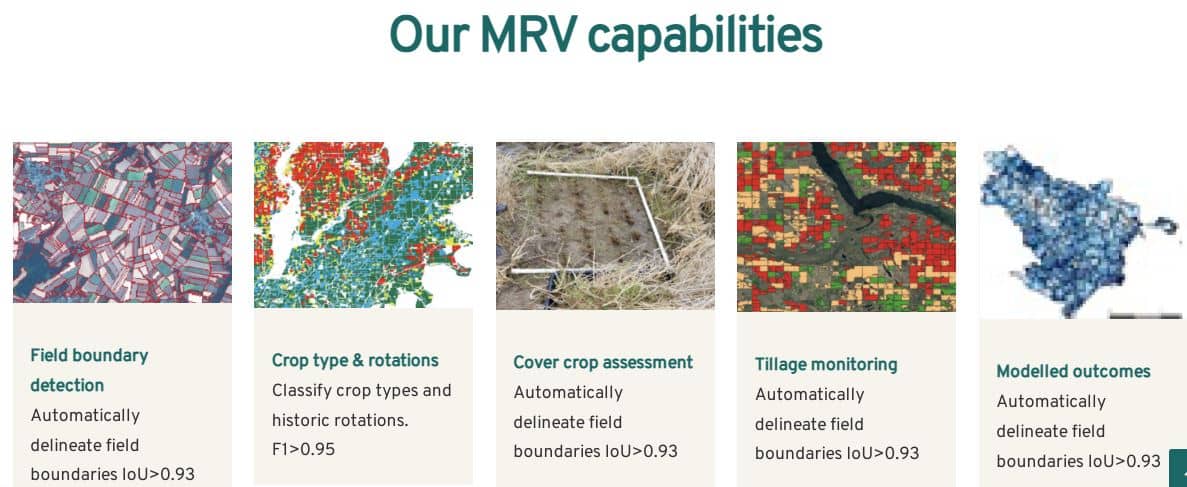Danish agriculture tech company Agreena has closed a $50 million in Series B funding round for its soil carbon credit program that incentivizes farmers to practice regenerative farming.
Agriculture accounts for about ⅓ of global carbon footprint, making it a focus of decarbonization projects around the world. And regenerative agriculture is a movement in the industry and has been the apple of the eye of venture capitalists.
Agreena’s CEO, Simon Haldrup said that:
“This is about more than just carbon credits… It’s a wider play in order to make [carbon farming] viable and drive a whole regenerative movement.”
A Farmer’s Burden
Land, water, and food are among the most important opportunities for mitigating climate change, says the latest IPCC climate report. Mitigation comes in many ways for these focus areas and better crop management is one of them. Other means include carbon capture and storage and biodiversity.
Agriculture-based carbon capture has been on the trend and will be the future norm. But it won’t come without hurdles. According to Haldrup, farmers hesitate to adopt regenerative farming practices that capture and store CO2 because they’re unsure of its impact on their yield.
For farmers who take part in the carbon farming programs, they consider the changes they need to do in their daily operations impractical. Others also think that the payouts don’t compensate for the costs.
In fact, a poll found that a very small percentage of farmers in the US (only 1%) entered into carbon farming contracts.
In Europe, small farmers are not positive about the EU’s climate plan saying that it only burdens them. They refer to the requirements they have to follow in capturing and measuring carbon through regenerative agriculture.
Add to that other barriers like political, regenerative ag becomes less attractive to farmers. So, Agreena comes in to make it more of a good business opportunity for the farmers, and not make them think it like another regulation to comply with.
Agreena’s Solution
Agreena’s technology is designed to help farmers transition to regenerative farming activities that lock in carbon in the soil. Its platform aids them to plan, monitor, and validate their transitions to regenerative farming.
The company focuses on allowing farmers to create a revenue stream and deal with technical barriers. Here’s how it works for farmers, step-by-step:
- Signing up: the farmer signs up on the carbon tech platform.
- Locating farm: the Agreena farmer uses the software to find their farm.
- Inputting data: the farmer will then input the data on their current farming practices. This usually goes back five years of farming activities. The goal is to establish a starting point from the farmers themselves. Agreena will then use the inputted data to have a strong baseline about each field.
- Calculating potential revenue: the software platform can test various ways that farmers can use to calculate the income they can possibly earn from different carbon farming practices. For instance, they can see what will happen if they adopt reduced tillage.
- Updating progress: once the farmer has chosen a strategy and implemented the regenerative farming methods they pick on their farms, they can update the platform with their progress.
The entire process is continuous. In an ideal scenario, the farmer is already simulating strategies for the next crop when the company is done verifying the previous crop.
So, how can Agreena ensure that the data from the farmers are correct as well as the carbon credits they produce?
That’s through the firm’s in-house MRV capabilities they call the Hummingbird. It helps boost the validity of the carbon credits that Agreena farmers generate.
The ag tech company verifies the data after harvest through a combination of onsite inspections, external data, AI, and satellite imagery. There is also a 3rd-party that verifies the whole process.
Only after verification that Agreena issues carbon credits to the farmer. The company may also help the farmer in selling those credits to the voluntary carbon market.
Farmers can use the proceeds from the sales of their carbon credits to further improve their farming business. For example, they can use the money to buy new machinery, cover yield loss, and keep their ag business moving forward.
Apart from farmers, companies looking to buy carbon credits for offsetting purposes can also work with Agreena. Agribusinesses, in particular, can use Agreena’s platform to better understand their Scope 3 or supply chain requirements.
Where the $50M Will Go
The platform is available in 16 European countries. Haldrup also said that their technology helped transition about 1.5 million acres of farmland to regenerative farming.
Agreena’s recent fundraising is led by Germany’s HV Capital with participation from new investors, Anthemis and AENU. There are also existing investors joining the round such as Denmark’s Export and Investment fund and Kinnevik.
The ag tech provider will use the funds to expand its carbon farming initiatives and improve financial services to farmers. For example, they can help farmers connect with corporations and access loans for buying equipment needed to fully transition to regenerative agriculture.
Part of the $50 million will go to building out Agreena’s platform by widening the data available for farmers’ use. As what Haldrup puts it:
“Carbon credits is where we have started, but ultimately we are building a stack of different services to add multiple layers of value to farmers when they’re transitioning.


